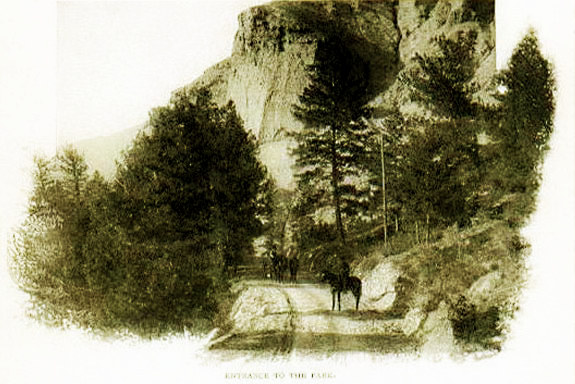
East Entrance to Yellowstone Park, 1909.
Beyond Pahaska was the entrance to the Park.
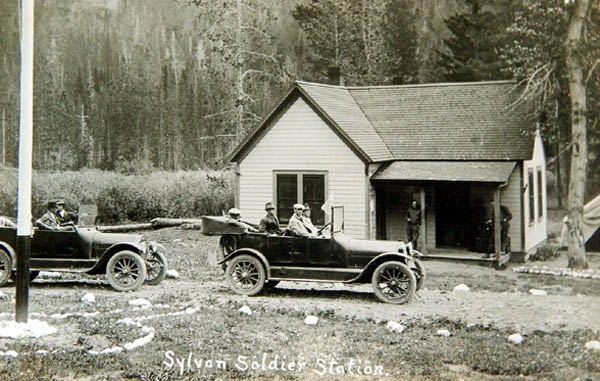
Soldiers' Station, Sylvan Pass, approx. 1918.
As later discussed, the Army administered Yellowstone Park until 1918 when the park was turned over to the
Department of the Interior.
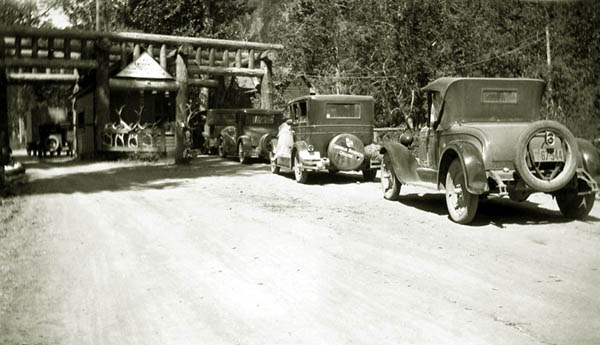
East Entrance to Yellowstone Park, 1920's.
Ahead lay Sylvan Pass. The road through
Sylvan Pass had been laid out in 1904. After passing
Pahaska Lodge the road became ever more steeper and
had in places a 10% grade.
If Dr. Bacmeister thought Shoshone Canyon was exhilerating.
Sylvan Pass was something else:
Eight miles inside the boundary you cross Sylvan Pass and here your motor
has its real test. As we loafed along this road, enjoying the wonders of
nature and congratulating ourselves upon having passed the busy Rangers
despite our lack of a spare tire (and we confess this moment had been on
our minds all the way from Chicago, "regulations" calling for at least
one spare on every car) we became conscious of the fact that our engine
was not working smoothly. It began to puff and spit, grunt and miss
and hesitate until we became alarmed lest it stop. We shifted into
intermediate and raced the engine a bit, just to clean the cylinders,
and then went back into high. Again the spitting and missing. We tried
a richer mixture, then a leaner one. No use! The engine slowed down and
seemed ready to stop. Again we went into second but now the motor
refused to pull even in second and, perforce, we shifted into "low,"
breathing maledictions upon the car for "falling down" on the job
just here and menacing our chance of reaching Lake Camp in time for
dinner! At this point we "looped the loop," crossed our own road on
the new concrete viaduct and then, noting the huge drop from upper to lower
roadway, began to realize the reason for our car's apparent misbehavior.
Sylvan Pass offers one of the most difficult climbs for the motor to be
found and it is a good car indeed that does not have to drop into "low"
to negotiate the last three miles of this stiff upgrade. We stopped
for a time at the top of the passóthere in that waste of tumbled rockójust
to watch the boiling, protesting, laboring machines top the grade.
Make sure that "she is hitting on all six" before you essay this bit of
alpine world.
The "loop" referred to by Dr. Bacmeister was a structure constructed by the Army
Engineers designed to keep the grade at 10% by having a spiral bridge.
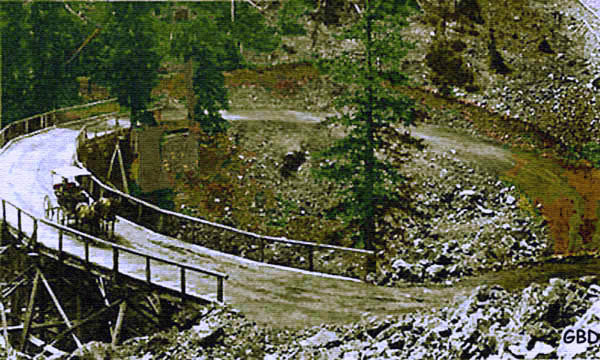
The "Loop."
By the time, of Dr. Bacmeister's trp the wooden structure had been replaced with a dirt and
concrete overpass. See next page. As suggested by Dr.Bacmeister, after passing the loop, the approach and
grade in the pass was steeper.
But Dr. Bacmeiser should not have complained. Prior to 1916, the Cody Road was only suitable for
pack trains or by wagons. Often the pass was not open until mid-June due to snow. The there was little incentive
to keep it in good repair. Indeed sometimes the snow was even later.
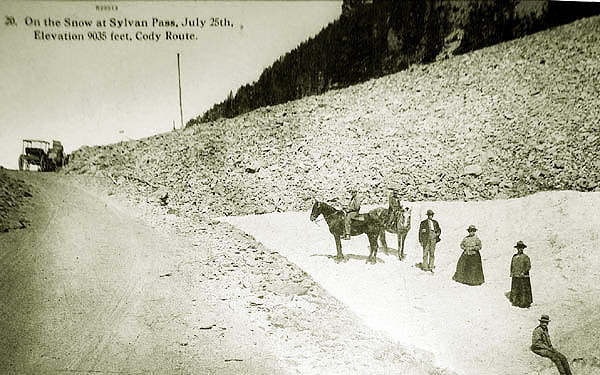
Syvan Pass, snow on July 25.
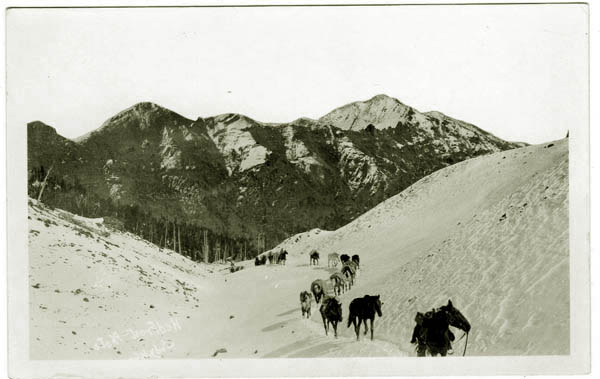
Ned Frost Pack Train Sylvan Pass.
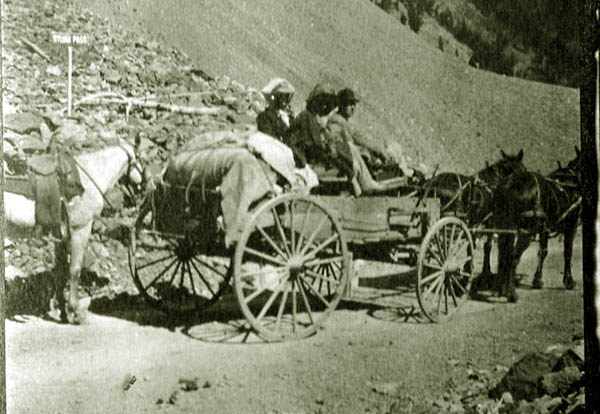
Tourists on the Cody Road, Sylvan Pass.
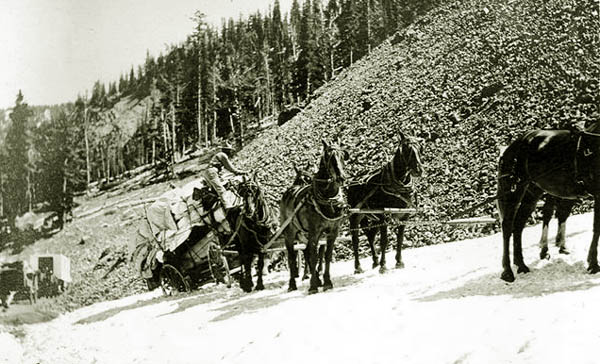
Jackknifing the wagon, Sylvan Pass, approx. 1909.
In the above photo the passengers in the wagon and their gear had to be taken off so that the
so the wagon could be righted and the horses could make the grade.
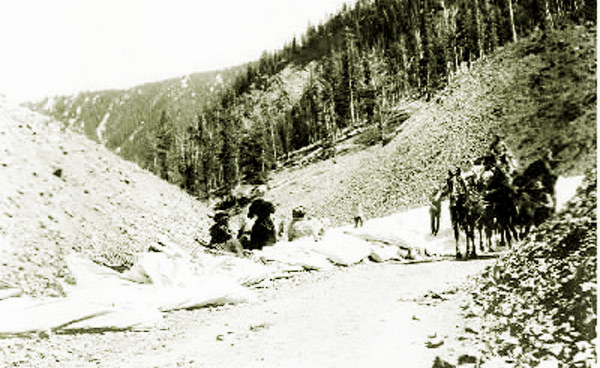
Ascending Sylvan Pass, approx. 1909.
Prior to 1916, the only access
to the park by means of the Cody Road was using pack trains or by wagon.
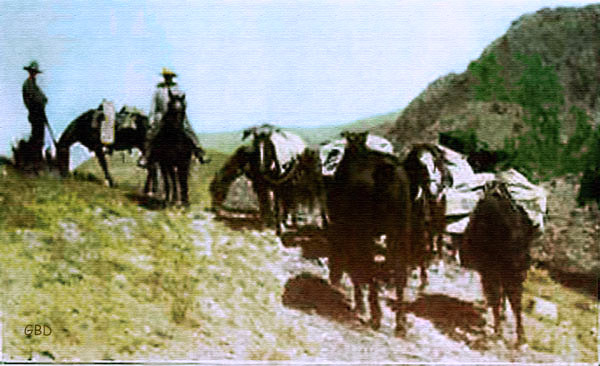
Frost and Richard Pack Train.
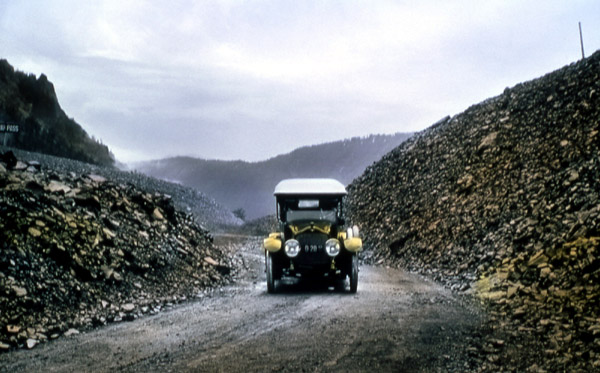
Motor car in Sylvan Pass, 1916. Photo by Haynes.
At Sylvan Pass there were other difficulties facing early motorists. The snow frequently would not melt until mid-June.
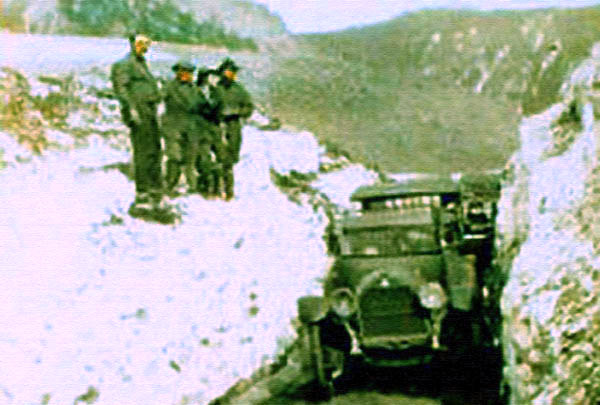
Motor cars in Sylvan Pass, approx. 1920. Photo by Haynes.
Music this page: "Long John" as played by Ten Daffan's Texans for Columbia Records.
Next Page: Cody Road Continued.